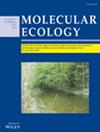Extensive Introgression Failed to Erode Species Boundaries Among Multiple Sympatric Closely Related Species of Roscoea
Abstract
How species boundaries are maintained among sympatric closely related species experiencing gene flow is a puzzling question in evolutionary biology. Although introgression is commonly documented, the dynamics and gene function of introgression have rarely been explored to probe why frequent introgression does not necessarily destroy species boundaries in sympatry. In this study, we employ whole-genome resequencing data to examine introgression among five closely related species of Roscoea that coexist in a ‘sky island’ with seventeen distinct morphological traits. Our findings reveal that introgression has led to the phylogenomic discordance between nuclear and chloroplast genomes among these morphologically distinct species. Additionally, introgression is predominantly asymmetrical in both intensity and gene function, particularly concerning recombination. Notably, the majority of gene functions associated with introgressed loci are unrelated to reproductive processes. Our results suggest that closely related species with incomplete allele assortment can coexist despite theoretical predictions, highlighting the semipermeable nature of species boundaries as reproductive isolation develops. This provides a critical conceptual framework for understanding the interplay between introgression and species persistence. Our finding offers insights into how related sympatric species boundaries can be maintained in the face of frequent asymmetrical gene introgression.



 求助内容:
求助内容: 应助结果提醒方式:
应助结果提醒方式:


